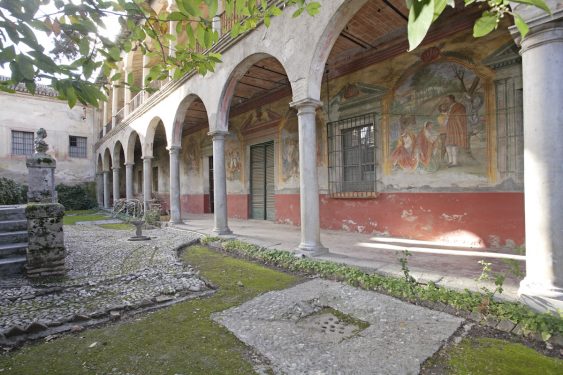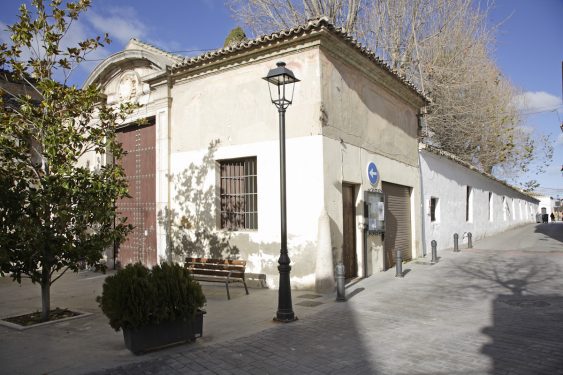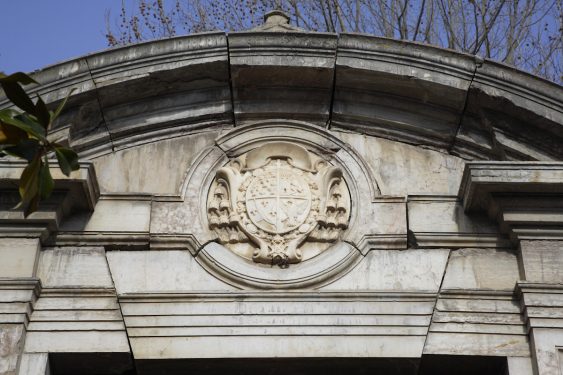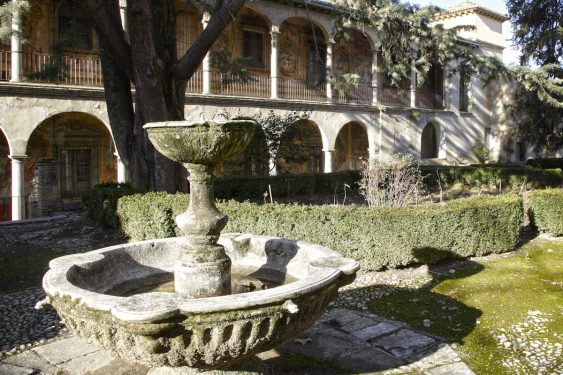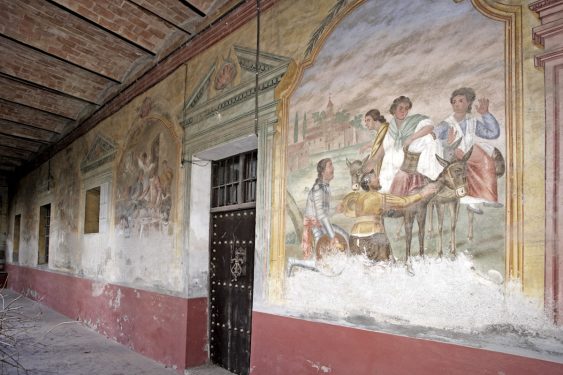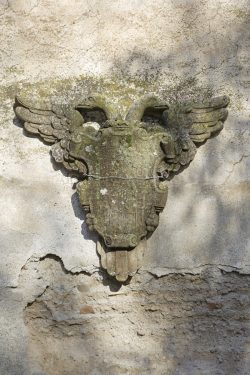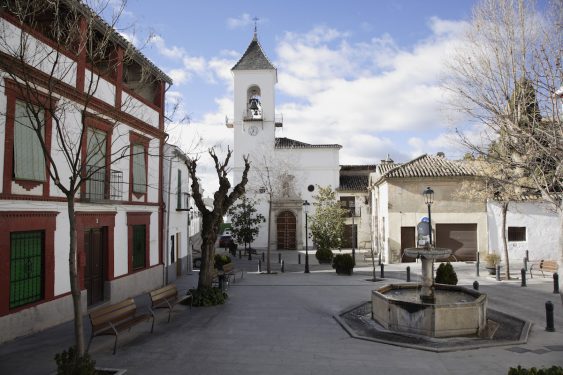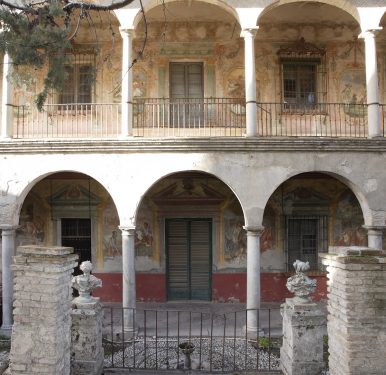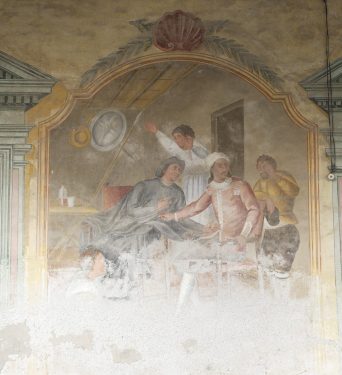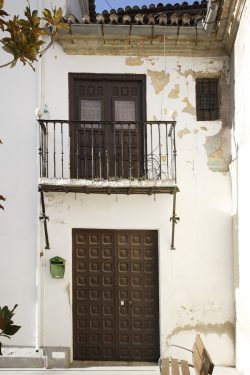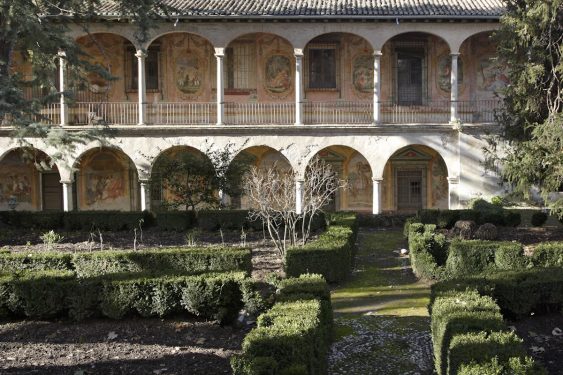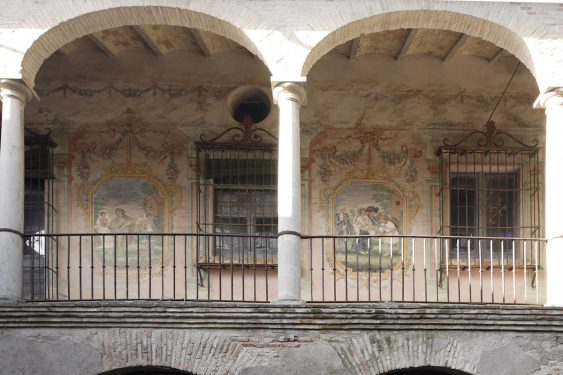Building built in the seventeenth century by Archbishop Antonio Moscoso where the Francoists installed their barracks in Víznar. It is privately owned and is not open to the public.
The Cuzco palace, also known as the palace of Archbishop Moscoso, is an eighteenth-century building linked to the Catholic Church located in the center of Víznar, a small town three kilometers from Alfacar in northeastern Granada, about ten kilometers from the capital.
The palace was occupied after the military uprising of July 1936 by factional forces to direct troop movements along a wide swath of the front and repel incursions by Republican forces. Captain José Nestares, appointed head of the Víznar sector, went to live in the palace during the first weeks of the war.
From August 1936, Víznar became one of the bloodiest places of the Nationalist repression. According to different sources, hundreds or thousands of people were taken from the prison and driven from Granada in cars and then executed without a trial in a chilling routine.
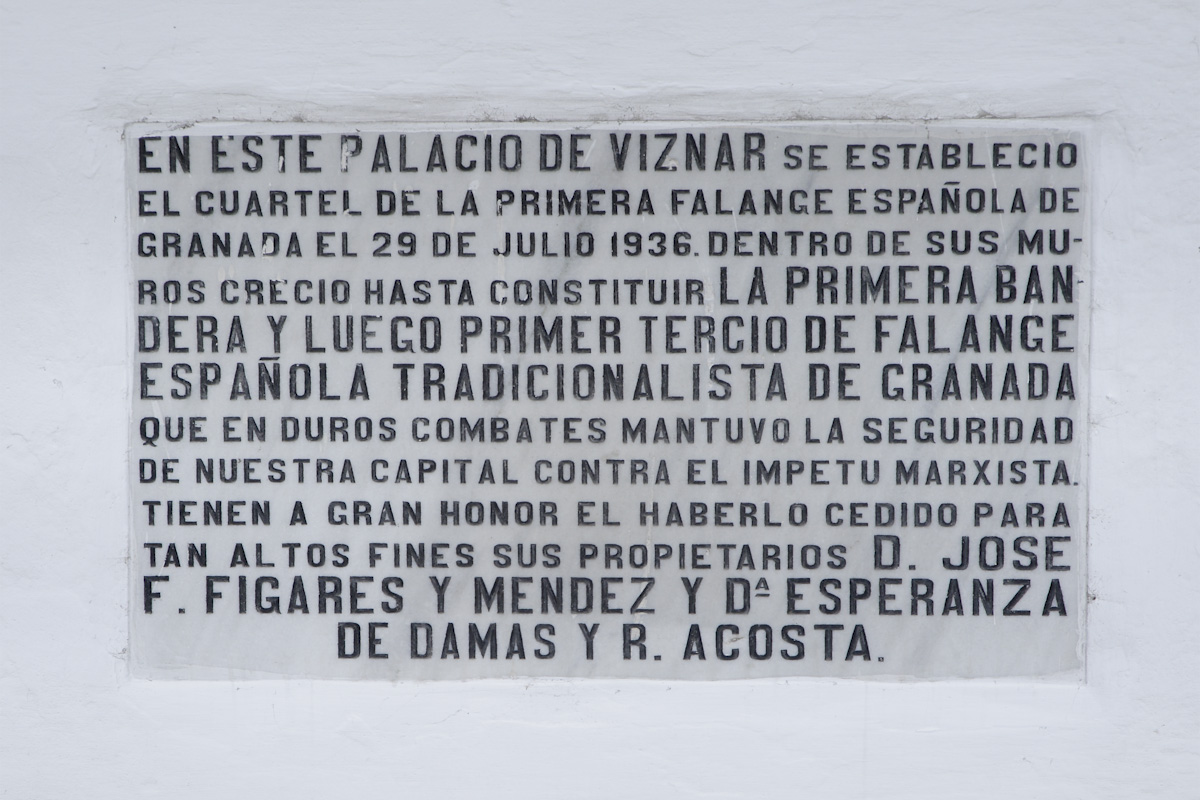
Nestares arrived in Víznar, by order of General Orgaz, with a column of Falange and some assault guards, on July 27 to organize the front. He was housed in the palace until mid-August when he moved to a private house seized from an inhabitant of Víznar.
José Nestares, as head of the sector, was informed in his office in the palace of Cuzco of the arrival of those condemned to death. After receiving the permission, the prisoners were taken to La Colonia, a former children’s playground, where they spent their last hours of life. Garcia Lorca arrived between August 17 and 19, according to various versions, in a dark red Buick, discovered, owned by Salvador Quesada, owner of Almacenes La Villa.
Nestares, as he confesses in an interview published by Eduardo Molina Fajardo in The Last Days of García Lorca, was the one who convinced the commander José Valdés to join the Falange. “I had his record and other things hidden on the roof of my house, in an oak tree, when the provincial chief, Antonio Robles, gave me the file (…). It was a time when, out of fear, no one wanted to be the depositary of compromising documents”.
According to Nestares, more than one of those uncontrolled and bloodthirsty groups called the “black squad” acted in Granada, among them the group of El Panaero. “They were really hired killers,” he tells Molina Fajardo. “They were led by Julio Romero Funes [responsible police officer], although at other times they acted on their own. Apart from that, as throughout the Civil War, there were uncontrolled acts that, despite some other chastisement, it was impossible to keep at bay.” Romero also directed his own repression squad, together with Nestares and the policeman Ángel Martín, known as Flying Patrols.
The Cuzco Palace in Víznar, where the rebels set up their headquarters during the coup of 1936, is a building attached to the parish of Víznar where the archbishops of Granada used to spend their summers. The building is well preserved, is privately owned and is open to the public once a year.
At the end of the 18th century, the archbishop of Granada, Juan Manuel Moscoso y Peralta, a powerful man born in Peru, related to the Creole nobility and who served as an ensign of Cuzco before taking the habit, added several adjoining lots, expanded the residence and the garden (thanks to the transfer of two streets by the Municipal Council of Víznar) and had a well built to supply the inhabitants of the house.
Juan Manuel Moscoso’s life was very hectic. After studying philosophy in Peru, he married at the age of 24 with a woman from the upper classes. After her death and that of his first-born son, he suffered a severe depression that led to his ordination to the priesthood and, later, to his appointment as bishop in 1771. Subsequently he traveled to Spain and specifically to Granada where he resided at least from his appointment as archbishop in 1789 until his death in 1811.
The palace has two floors, with large rooms and a double porticoed gallery. In the upper part of the gallery there are magnificent frescoes by various artists, including Nicolás Martín Tenllado, an artist with a history as curious as that of the archbishop himself. Tenllado was a celibate who ran a lucrative bric-a-brac business but that after his social ascent was judged by the Inquisition and had several lawsuits for the blasphemy and insults to religion that he used to exclaim while making his paintings, inside convents and churches.
Se fue sustituyendo cada día
[It was replaced every day]
Para ser siempre el mismo. No
[To always be the same. He did not]
Compartió la vida que su vida
[Share the life that]
Adosaron: era tan junto
[They attached: it was so close]
Como la madera del cedro
[Like cedar wood]
De los Mártires, tan recóndito
[Of the Martyrs, so hidden]
Y caro como el agua
[And expensive as water]
Que derrocha en el Darro sus cuchillos.
[Who wastes his knives in the Darro.]
Paraíso cerrado
[Closed paradise]
para muchos, su palabra se abría
[for many, his word was open]
Igual que se abre un pozo
[Like a well is opened]
En mitad de una hoguera. Quiso
[In the middle of a] [bonfire. He wanted]
Ennoblecer una cultura
[To ennoble a culture]
Con otra más dramática, una historia
[With another more dramatic, a story]
Con sus vislumbres de mitología,
[With its glimpses of mythology,]
La voz de un pueblo con la suya.
[The voice of a people with his.]
Su libertad tenía el color de la sangre.
[His freedom was the color of blood.]
Ávidamente amó lo que más pudo,
[He avidly loved what he could the most,]
También sobrevivió a sus asesinos.
[He also survived his killers.]
- Miguel Caballero. The thirteen last hours in the life of García Lorca. La Esfera de los Libros. Madrid, 2011.
- Ian Gibson. From New York to Fuente Grande. Grijalbo. Barcelona, 1987.
- Ian Gibson. Life, Passion and Death of Federico García Lorca. Debolsillo. Madrid, 2016
- Federico Molina Fajardo. García Lorca and Víznar. Memoirs of General Nestares. Ultramarina. Granada, 2012.
- Eduardo Molina Fajardo. The last days of García Lorca. Plaza y Janés. Barcelona, 1973.
- Website Rincones de Granada. Cuzco Palace.
- Lorca´s location
- Cuzco Archbishop Palace
- current location
- Cuzco Archbishop Palace
- ADDRESS
- Plaza Noguera
- DETAILS OF THE VISIT
The Cuzco Palace is privately owned and is not open to the public.
HOW TO GET THERE BY BUS
